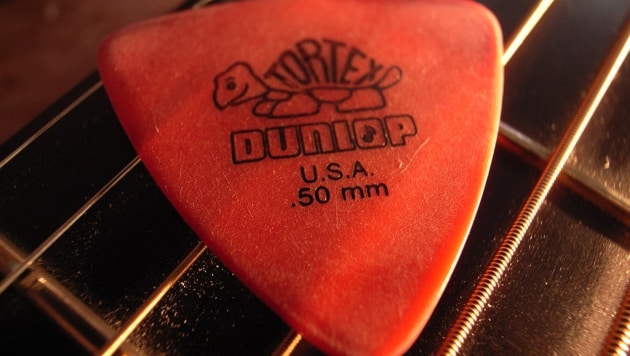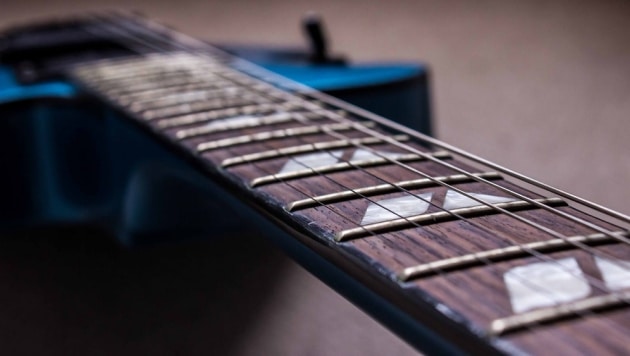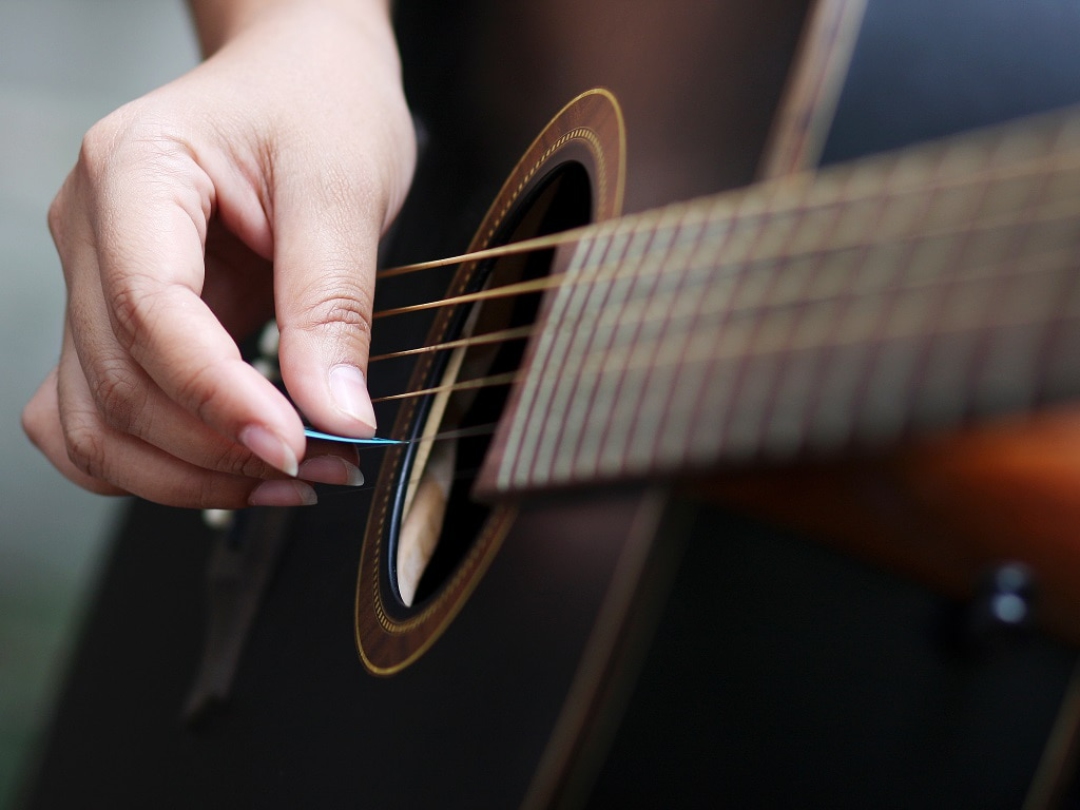Falling into the same category as walking on a lego when you’re a parent or when your toast falls jam-side smack dab on the floor, the guitar pick that slips or the string that breaks are some of the biggest annoyances for a guitarist. Particularly if you were in the middle of an especially inspiring jam session when concentration is imperative... Here are some tips to help you avoid these little annoyances.

The jumping pick
When your back was turned did your pick slide around in a clump of butter or soap itself up? Every time we get a little too excited on the strings of our acoustic guitar, the darn piece of plastic slips away from our fingers and right into sound hole. And like fools, we shake, rattle and roll the guitar for five minutes trying to recover it, or worse, we go to extremes and remove the strings in order to retrieve it and all the other picks that have gathered up some dust inside. A simple, silly little trick to try: paste a piece of sticky tack on the tip of a pen or hanger and fish out the pick. It’s kind of like when you were a kid fishing at the county fair to win a prize. To prevent the annoyance, pay attention to how you are holding the pick: pinch it tightly between your fingers, while still maintaining some flexibility.

The brittle string
How ever can the paranormal phenomenon that makes one of your strings become loose (seemingly always the same, the one that you just changed)? First possibility: you tried tuning by ear, but reached a little too high. Investing in a small digital tuner isn’t a luxury, rather a necessity in this case. Some electro-acoustic guitars already have them. Another probable cause: you use a string that is unsuited to your style of play. If your strings are too thin and you shred them like a lumberjack at every bump, don’t be surprised that the tightly wound string gives it right back to you. A bad setting on your sleeve could be the root of this, so a turn of your allen wrench may be the welcomed solution. Otherwise, entrust your guitar to expert hands. Finally, take a look at the incriminated string. At what level is it broken? Because a little glance at the state of your frets will tell you a bit more about the origin of the problem. Pass your finger on each fret, they should be perfectly polished.

The loose battery
The preamp battery of your electro-acoustic (this also applies to your effect pedals if you're not on power) risk giving out after a certain period of use. The issue is knowing when it’s going to give out... Some electro-acoustic devices have a red light to indicate the end of battery life. But when is not the case, how will you know? Why would you change the battery if it's only half empty? The only way to know is to use your ears, that's how you'll spot a progressive loss in the power of your sound and the quality of it. A battery that is at the end of life will also produce a slight characteristic distortion and that’s when you know it’s time to change the battery. And a little tip, always have a new battery with you just in case.

And your sweat...
To play well requires an instrument that’s in tip-top shape. One of the elements on any instrument that wears the fastest is your strings. They have an unfortunate tendency to oxidize. Do not put all the blame for this phenomenon on the poor quality of the brand recommended by the seller at the music store... the culprit? It's actually you! You sweat like a sumo dripping in a sauna. Ok, it's not your fault, you're part of a long line of musicians who sweat from your hands, it's genetic! Two things can reduce this phenomenon: the first is to use talc powder before playing. Yes, talc, the powder you use on a baby’s butt! This will help with the problem of your fingers slipping all the time. The second solution: wipe the entire surface of the handle with a dry cloth before putting the instrument back in its case. Strings do not like moisture … Conversely, wood sometimes needs moisture, or more stable humidity level so you might think of a humidifier that you can slip into the sound hole of your guitar.

The villainous feedback
Like any amplified instrument, the electro-acoustic guitar has a small little annoyance called feedback. Yes, that ugly whistle that’s like nails on a chalkboard to your ears. The solution is within reach of all budgets: for less than ten bucks, you can buy an "airlock," a piece of plastic about four inches in diameter that is applied to the sound hole. And if you’re not willing to shell out a dime for it, we’ve got a handy solution: take a CD of which you’ve always wondered why it is part of your collection, like that 1992 electric-euro-pop-dance one, and tape it over the hole and you get a very aesthetic airlock for nothing!
Ok, you are all set, you've eliminated all the unwanted issues, there’s nothing to stop you along your path of guitar-creating-magic.This is the point when your mother or neighbor, whose ears are ultra-sensitive to wrong notes and who are insensitive to your talent, walk in on your practice session. Alas, we don’t have any tips adapted for this issue...
